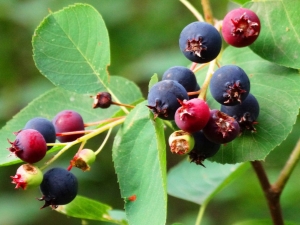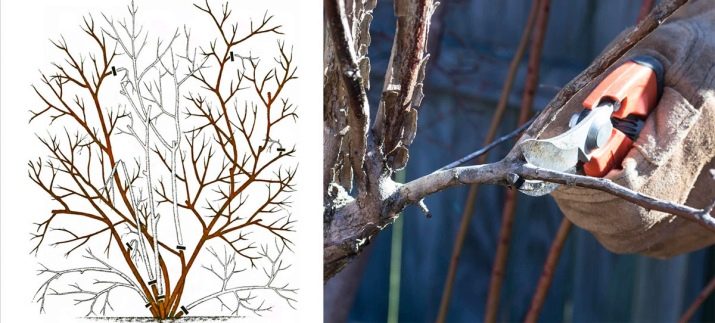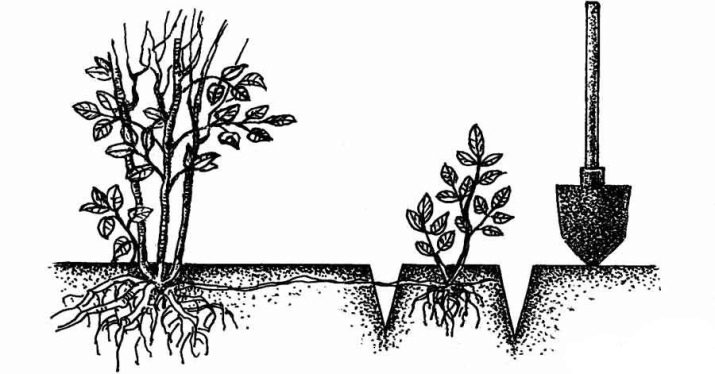Rules for transplanting irgi to a new place

Irga is an excellent shrub that can adorn any garden. But in all gardens and kitchen gardens it is periodically necessary, for various reasons, to do “redevelopment”.And in this case, it is very important to know how to transplant already-rooted irgu to another place.
Special features
It should be noted right away that transplanting an adult plant to a new place is not the most sensible idea. The roots of the developed irgi can go down to 2 m. By 7–8 years, it will be necessary to make a transfer bar with a width of 1.25 m, and its depth reaches 0.7 m. In subsequent years, these requirements only increase. Because it is desirable to immediately determine where to plant irgu. In extreme cases, this should be done in the first 3-4 years.
How is everything done?
But even if it is possible to transplant the irgu, it should be done very carefully and carefully. Using a shovel, dig the ground around the plant, then gently hook it with a shovel. Using any suitable lever, take the plant out. For your information: very large, hard-to-remove roots must be cut off - they will quickly grow anyway. Once the plant is moved to the planting pit:
- earth is compacted;
- thoroughly water the bush;
- Spread mulch in pristvolnom circle.
In the first 12 months, shrubs are fed with a solution of ammonium nitrate. It is made using 0.05 kg of the drug per 10 liters of water. Pour ammonia solution needed only near the barrel.
Important: in the absence of nitrate from gardeners, bird droppings or slurry are taken. For 5–6 years, the transplanted irgu is fed with organic matter (20–30 l per 1 bush) and mineral compounds (0.5 kg of ammonium nitrate, potassium salts, 1 kg of superphosphate per bush).
For the first 3 years, only the strongest stalks of the zero level are left. Later it is necessary to remove all the shoots, except for two or three. The goal is to form a bush of 10, 12 or 15 shoots of different ages. When pruning removed:
- thickened stems at the root;
- old and weak branches;
- sick and broken shoots.
When should I do and how to act?
Repotting irgu in the summer is not recommended. At this time, the plant enters the phase of active development. Therefore, it hardly takes root, hurts and suffers. In order for a tree (bush) to stick, you need to evaluate its quality. Transplanting irgi in the fall to a new place is justified only if the variety is resistant to cold. The yield level is not critical if the plant is transplanted to form green hedges.
The health of the root system is very important. Rotting, the slightest dried up sites are inadmissible. Trunks of transplanted seedlings should be well developed. The slightest damage to the cortex is unacceptable. The approach to transplanting is the same as for the original landing.
Pick up the site for transplant irgi need to carefully. You need to move it to a sunny place. Otherwise, a good harvest is not obtained. Another important requirement is the great depth of groundwater location. The soil should be light in structure - friable loams are ideal with a significant proportion of humus, although it is possible to transplant the irgu in sandy loam.
Another important point is the acid-base balance. The acidity index should be not lower than 6.5 and not higher than 7. The plot is completely cleared of weeds. To better prepare the land, improve fertility, the soil is sown with legumes. Before planting, they dig up the soil by adding about 10 kg of compost and 0.04 kg of potash and phosphate fertilizers.
Irga transplantation is done as early as possible in spring or late autumn. For spring planting, bushes are taken without swollen buds. In September-October, it is necessary to check that the bush completely gets rid of the leaves. However, it is necessary to hurry, because there should be about 20 days or more before frosts. If this condition is not observed, the plants sometimes do not have time to take root. It is recommended to allocate to each seedling 4 m2, leaving a gap of exactly 2 m between them.
Important: for a hedge, an irga is planted with a smaller gap, that is, it should be between 0.5 and 1 m. Only gardeners and gardeners can determine this distance more precisely, because no one knows any better than them anyway.
The landing pit during transplantation may have a depth and diameter of 0.6 m.A difference of more or less than a few centimeters is allowed.
For your information: in dense and heavy soils, these figures are reduced to 0.7 m. The layer of fertile soil must be removed. A hedge is often planted in trenches. The trench width is 0.4 m and the depth is 0.3 m. The upper part of the ground is mixed with 10 kg of humus; 0.3 kg of superphosphate and 0.2 kg of potassium salt are also placed per well.
If you do not use potassium compounds, you can lay 1 kg of ash instead. Down in the pit put the finished soil mixture. Put the bush, gently straighten the root system. Roots are required to fall asleep purposefully prepared soil mixture. What will it be - the farmers themselves decide, taking into account the terrain, the type of the main soil, a type of irgi, season and other factors.
In any case, you need to bring the root neck to the surface of the earth. It should not be buried in the ground. Each transplanted bush watered with 10 liters of water. Humus is preferred for mulching. When transplanting plants with a deformed root system, they are pruned into 5 buds.
It is not recommended to plant irgu near Manchurian walnut and pear. The list of unwanted neighbors also includes:
- barberry;
- lilac;
- roses;
- Kalina;
- acacia;
- walnuts.
When transplanting irgi into well-fertilized soil, it should be fed at least for the third year of development. The exceptions are those cases when the plant languishes, weakens or is ill. From spring dressings, organic compounds with a noticeable concentration of nitrogen are best suited.
It is not necessary to use humus. The mullein dissolved in water or bird droppings are also very good. It is necessary to introduce the fertilizing mixes after watering of the earth; if heavy rain falls, it is not necessary.
In the Urals, in Siberia, in the Far East and north of Moscow, they are transplanted to irgu only in spring. Autumn transplant means there is a big risk of freezing bushes. If the bush is at rest, it can be transferred to begin to thaw the ground. This technique allows to achieve the dissolution of the kidneys strictly on warm days. Because they do not freeze.
On the rules of landing Canadian Jungle you will learn from the video below.






















